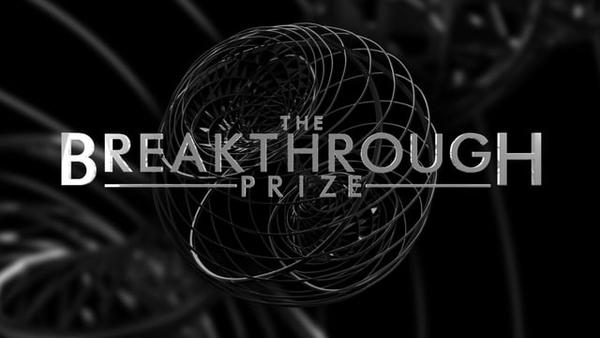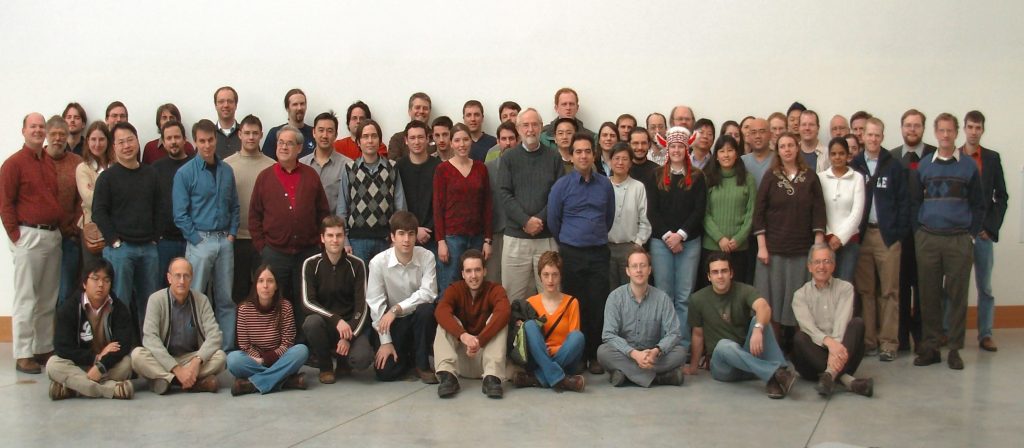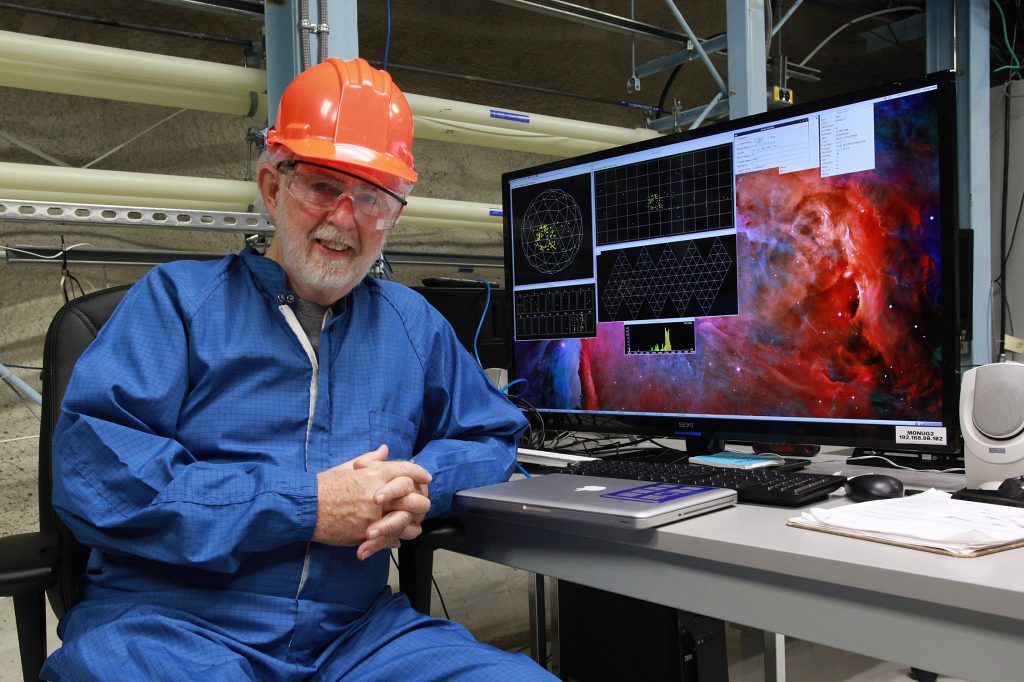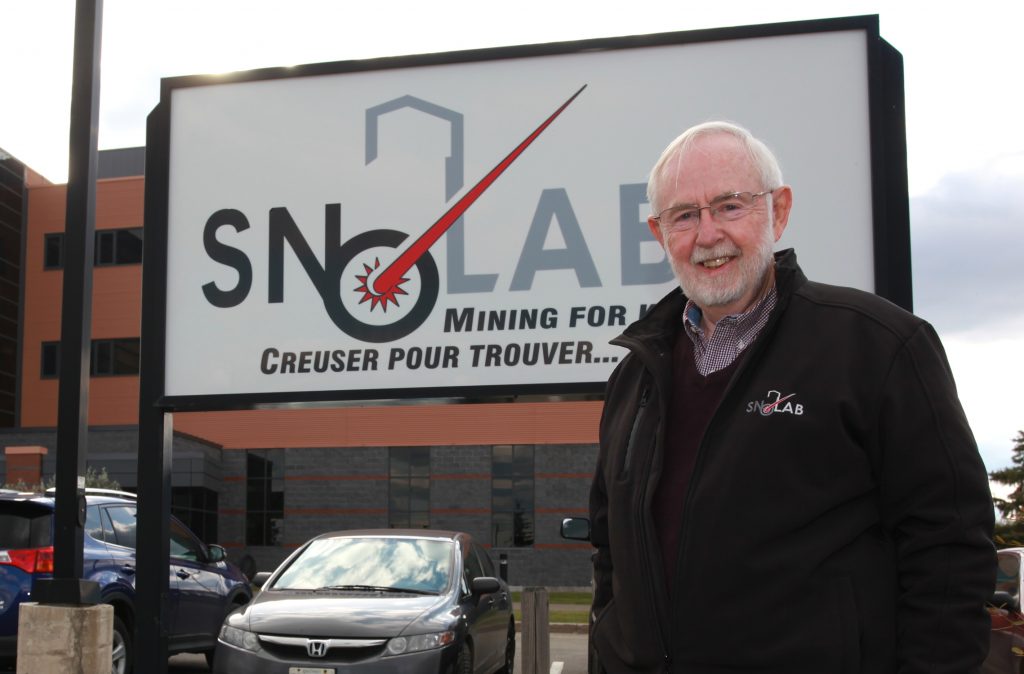SNO Collaboration jointly awarded 2016 Breakthrough Prize!

SUDBURY – The Sudbury Neutrino Observatory (SNO) Collaboration, represented by Dr. Arthur McDonald have shared the 2016 Breakthrough Prize in Fundamental Physics.
The Prize was presented by the Breakthrough Prize Foundation “for the fundamental discovery of neutrino oscillations, revealing a new frontier beyond, and possibly far beyond, the standard model of particle physics”. The $ 3 million prize is shared with four other international experimental collaborations studying neutrino oscillations: The Superkamiokande, Kamland, T2K/K2K and Daya Bay scientific collaborations.
The research at the Sudbury Neutrino Observatory 2 km underground in Vale’s Creighton mine near Sudbury, Ontario Canada demonstrated that neutrinos change their type – or flavour – on their way to Earth from the sun, a discovery that requires neutrinos to have a mass greater than zero. The results also confirmed the theories of energy generation in the sun with great accuracy.
Professor McDonald, SNO Project Director, stated: “Our collaboration members are very pleased to receive this testimony to the scientific significance of their work. Our findings are a result of many years of hard work starting in 1984 when our collaboration began with 16 collaborators, led by co-spokesmen Professor George Ewan of Queen’s University and Professor Herb Chen of the University of California, Irvine who were joined in 1985 by Professor David Sinclair of Oxford University. Our international collaboration grew substantially and provided an exciting education for many young scientists over more than 20 years. Our full scientific author list includes over 270 scientists sharing this prize”
The award was presented at a ceremony at the NASA Ames Research Centre in Moffett Field, California. The ceremony, hosted by comedian Seth Macfarlane, was broadcast live in the U.S. on National Geographic Channel, with a one-hour version of the broadcast scheduled for Fox on Nov. 29, at 7 p.m.
Founded by Russian entrepreneur, venture capitalist and physicist Yuri Milner, The Breakthrough Prize in Fundamental Physics recognizes individuals who have made profound contributions to human knowledge. It is open to all physicists — theoretical, mathematical and experimental — working on the deepest mysteries of the Universe. The prize is one of three awarded by the Breakthrough Foundation for “Outstanding contributions in Life Sciences, Fundamental Physics, and Mathematics.”
Dr. Nigel Smith, SNOLAB Director, was happy to extend accolades to the winners “What amazing news! It is a real pleasure to congratulate the SNO Collaboration and Art McDonald on the award of the 2016 Breakthrough Prize in Physics, along with the SuperKamiokande, T2K, Daya Bay and Kamland projects. This award is a great validation of the outstanding physics that has been delivered from the SNO detector, solving a long-standing problem in understanding neutrinos arising from the Sun, and indicating new physics that needed to be incorporated into our understanding of the Universe. This has been a tremendous few weeks for the SNO Collaboration, with this award of the Breakthrough Prize and the recent joint awarding of the 2015 Nobel Prize in Physics to Art McDonald and Takaaki Kajita.
SNOLAB is honoured to be carrying the legacy of this ground-breaking project forwards, with a new generation of experiments being developed at the SNOLAB facility in the Vale Creighton mine, including more sensitive neutrino projects, searches for the elusive dark matter in the Galaxy, and new research threads in genomics and mining innovation.” SNOLAB is Canada’s leading edge astroparticle physics research facility located 2 km underground in the Vale Creighton Mine. The project began in 1990 as the Sudbury Neutrino Observatory (SNO); the enormous success of the SNO experiment proved the value of deep underground physics laboratories and the SNO measurement has led to more questions about the nature of neutrinos and the composition of the Universe that can only be answered in experiments sited underground.
The SNOLAB facility is operated as an ultra-clean space to limit local radioactivity. With greater depth and cleanliness than any other international laboratory, it has the lowest background from cosmic rays providing an ideal location for measurements of rare processes that would be otherwise unobservable. Measurements are planned by a number of international collaborations that will seek Dark Matter particles left from the Big Bang and search for a rare radioactive process called neutrino-less double beta decay that could help explain the development of matter in the early Universe. Other experiments will measure neutrinos from the Sun, the Earth, watch for Supernovae in our galaxy and measure local seismic activity. The facility is operated by the SNOLAB Institute whose member institutions are Carleton University, Laurentian University, Queen’s University, University of Alberta and Université de Montréal.
For more information:
Samantha Kuula
Communications Officer, SNOLAB
Samantha.Kuula@snolab.ca
Office: (705) 692-7000 x2222
Mobile: (705) 626-2884
Find us on Facebook and Follow Us on Twitter!
For interview requests:
Chris Armes
Communications Officer, Media Relations
Queen’s University
Office: 613-533-6000 ext.77513


